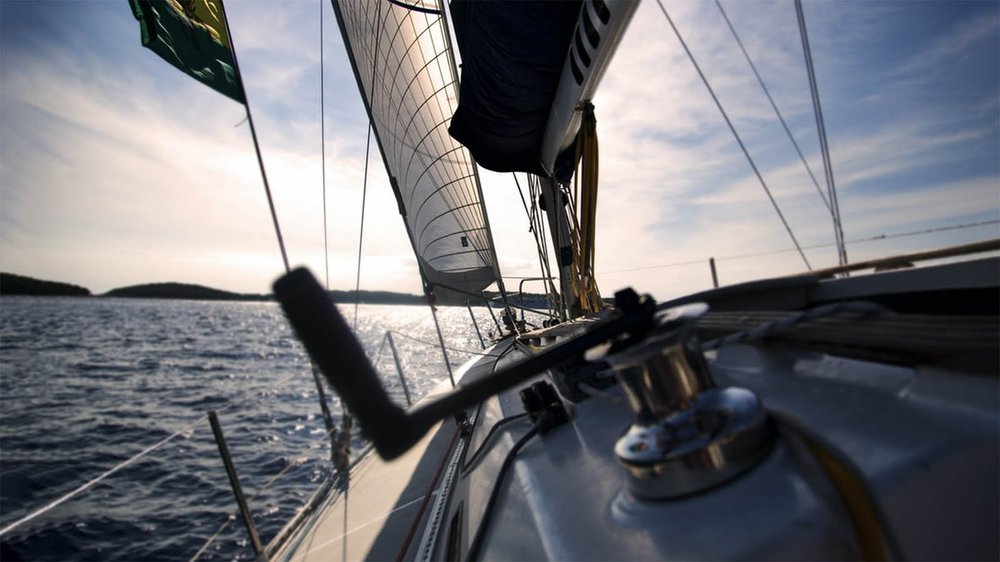I have saltwater flowing through my veins.
I absorbed it through surfing, scuba diving, snorkeling, water skiing, and most of all, sailing. I can remember water before I can remember school. I grew up crewing and then skippering one-design racing sailboats like Penguins, Comets and Lightnings. I worked in the yacht charter business and as a charter and delivery captain.
So, what does this have to do with leadership? Racing is a special part of sailing. And the difference between racing in particular and sailing in general is very useful for better understanding how we lead and how we learn.
Last spring, I sailed by myself for a week. The first question people asked was “Where are you going?” I told them I was going out on my boat. “But where?” I answered that I didn’t know. I realized I also didn’t particularly care. I would be sailing. Sailing was my destination, not reaching the finish line. That’s the crucial difference between sailing and racing.
My racing experience gave me a keen understanding of the physics of sailing. Being intense about sailing increases focus. It also increases tension. Over time, that tension gets in the way of intuition and sailing becomes a mind game, detached from emotion, even from learning about anything that doesn’t contribute to a narrow goal: doing it better than the next guy. Nothing wrong with that. I’m very competitive. It runs in the family. My father was national Senior Sunfish Champion several times. I’ll never achieve that. I like to sail too much. My father’s frame for being on the water was racing. He zeroed in on gaining advantage, using the rules to win, paring down his learning and experience to what was useful for winning races. He also grew up in a different world than I. And his frame reflected that, I think.
Here’s a list of the differences between the racing frame and the sailing frame:
RACING:
Excitement tempered with boredom.
Subtraction: There’s only one winner
Direction
The Goal: to finish, preferably as THE winner
Adrenaline throughout
SAILING:
Serenity tempered with excitement
Addition: It’s all connected
Flow
The goal: to continue
Adrenaline in reserve
There’s a saying among nautical folks: being on the water is 90% pleasure and 10% terror. When sailing, a tranquil cruise can turn into getting hammered by a line of violent squalls. That’s when experience, common sense, intuition and adrenaline combine for, with any luck, a great story. Racing imposes a false and constant sense of emergency. If you’ve ever passed a sailboat race, you may have heard the yelling seasoned with some spicy nautical epithets.
Sailing saves urgency for the appropriate emergency. Racing imposes that sense of urgency for effect. It’s as if racers are bored when merely sailing. In truth, most of them actually are.
In the workplace and in schools, we too often impose the racing mindset: get it done, hurry up, overload everyone, idle hands are the devil’s workshop, learning is hard work, no pain, no gain, you’re not here to have fun!
I suggest that’s a false layer of stress we would do well to avoid. We know from Hans Selye’s work — he’s kind of the godfather of stress — that prolonged stress erodes performance, reduces systemic awareness, and eventually kills. And the racing mindset overlays the joy of sailing with the stress of competition.
Is racing exciting? If you’ve ever sat becalmed and wondered Why the #$%^&* do they call this racing? you may have missed the excitement. Racing builds teamwork, tactical wisdom, and a sense of accomplishment. It also reduces the ability to enjoy sailing: no destination, stop when you feel like it, and arrive when you get there. Those of us who think leadership and learning work best only in the racing frame may need to take a second look.
When we’re relaxed, open to new information, unpressured by outside events, we make better decisions and create stronger, more even relationships that approach partnership instead of Captain and Crew. Save the emergency urgency for the real thing. Sail.
P.S. We all really do have salty water flowing in our veins, in the sense that the pH of blood and salt water is congruent. Blue Mind (Wallace J. Nichols) is a brand new and well-researched book suggesting we humans are inspired and restored by contact with the ocean. Boating works, swimming or even sitting on the beach.
About the author

Mac Bogert is President of AZA Learning and a regular columnist for the Learning Counsel. He began his career as an English teacher. For the past 25 years, Mac has focused on the intersection of leadership and learning. In between, he is a musician, professional actor, yacht charter captain, staff development consultant, curriculum designer and author of Learning Chaos.











